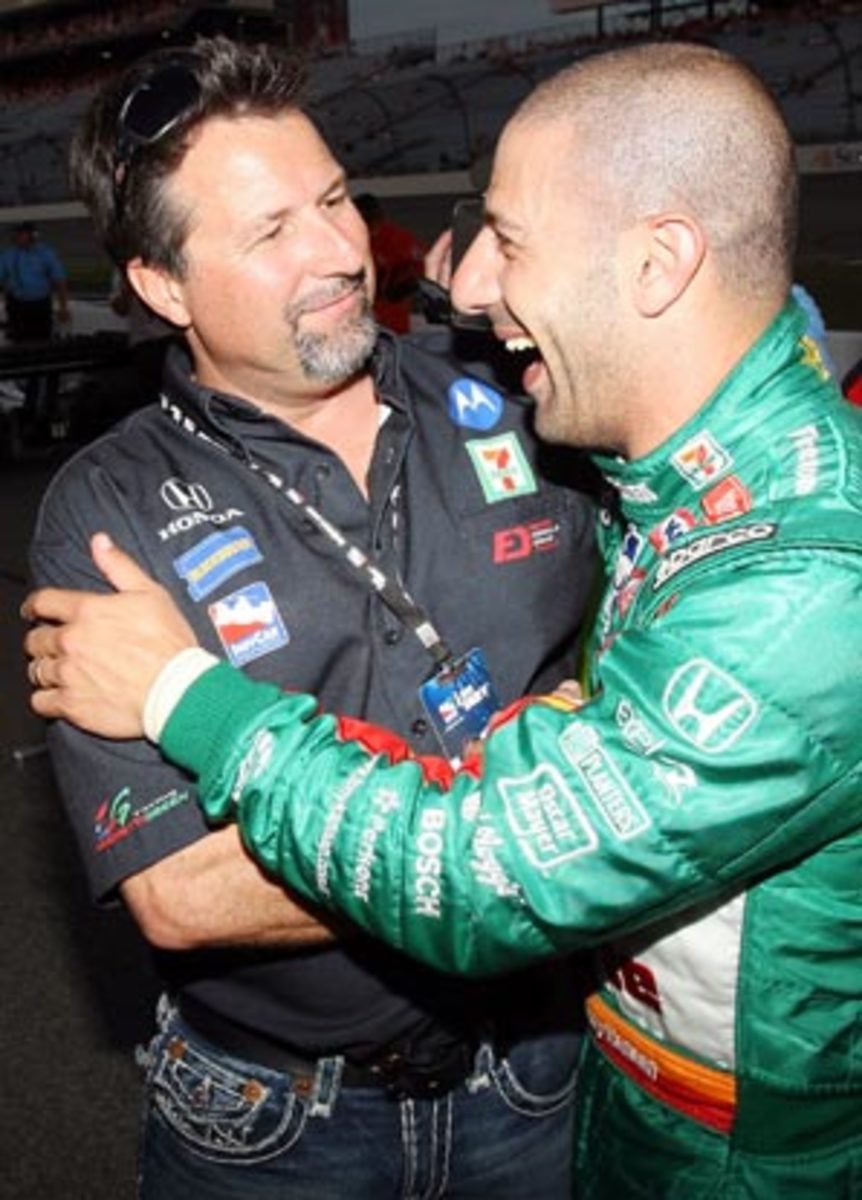IRL not willing to jump on the bailout bandwagon
The Phoenix Coyotes are having trouble paying the ice bill, so much so the National Hockey League has intervened to steady a bankrupt club that not even Wayne Gretzky could save.
Meanwhile, the National Basketball Association secured $175 million in loans for several franchises recently. In an economic climate in which the word "bailout" has become a political hot button, sports franchises are increasingly seeking aid, or at least buttressing, from their governing bodies. Not in racing, in general, however, and not, specifically in the Indy Racing League, according to commercial division president Terry Angstadt.
Though North America's top open wheel circuit is still in the process of finding its footing after reunification -- and the absorption of several former teams and events from the Champ Car series that went bankrupt after the 2007 season -- the IRL will not assist teams financially through a difficult climate.
"We're not in a position to subsidize teams," Angstadt said. "It will be what-you-see-is-what-you-get. We are working real hard to help secure sponsorship for teams with a dedicated sales team, doing presentations, doing research, trying to do all the things to assist. But writing checks, we just can't do."
Team co-owner Michael Andretti, whose Andretti Green Racing team fields cars for his son, Marco, Tony Kanaan, Hideki Mutoh and Danica Patrick, said it costs about $8 million to maintain one program with a realistic chance of victory. Teams lease engines from Honda for $900,000 a year, according to the IRL.
"We're already lean and mean because we've gone through some tough times [as a league]," Andretti said. "We are better-situated to handle what is happening right now."
Handling and winning are different matters, though. Smaller teams with high-quality drivers have been able to compete on street/road courses early in the season, with Ryan Hunter-Reay (Vision) and Justin Wilson (Dale Coyne) finishing second and third, respectively in the season-opener at St. Petersburg, but those results are unlikely to continue on oval tracks where high-priced technology can yield major gains.
Paul Tracy, who recently quipped that a former winner of the Indianapolis 500 might not require a refresher course at Indianapolis Motor Speedway, was the fastest of four rookies and three veterans undertaking tune-up laps on Tuesday.
Tracy, 40, a winner of 31 Champ Car races, was ruled second to Helio Castroneves in the 2002 Indy 500 on a controversial steward's decision as the race ended under caution. Out of a full-time ride since his Forsythe Racing team evaporated with Champ Car, he signed with KV Racing to race Indianapolis for the sixth time, but his first since 2002. Tracy covered the 2.5-mile oval in 40.3426 seconds (223.089 mph).
"I just want to race. It's all I've ever done," he said. "I've been racing since I was six years old, and I didn't want my career to just come to an abrupt stop after racing Indy cars for 16 or 17 years. When the merge happened, my team owner decided to stop, and when the music stopped, it kind of left me without any seats to sit in. It's been very frustrating thinking after all this time my career's just going to end like that. That's not the way I wanted it to end. I realize I'm not going to race another 10 years, but I'd like to run a couple more years. I feel I'm competitive. I feel I've got the drive. And hopefully something will open up."
Rookie Robert Doornbos was the first driver on track for Indianapolis 500 practice. It's a distinction that hasn't statistically increased the likelihood of success, but it's in keeping with the former Formula One test driver's efforts to fast-track his assimilation to ovals. Doornbos, 27, knew he had much to learn in his first rookie laps during an orientation session with Newman Haas Lanigan and other teams at Homestead-Miami Speedway this spring.
"The first five laps I had white knuckles and I thought, "What am I doing here?," Doornbos said. "'I should probably take a plane back home to Europe.'
"The speeds are high but having been lucky and racing in Formula One I know what high speeds are, but normally we attacked a corner, you brake, you turn in, you go back on the power and you try to do it as fast as possible, and here I was just driving toward this concrete wall and I had some voices in my head saying, 'What are you doing? You should lift or brake or whatever.' But the car turns by itself so easily. It's really strange. Physically there's not a lot of input to make the car turn because the way its set up, when you leave the box you'd already think you crashed the car. For me, it was a lot of things on my mind. It was like being in school the first day."
Doornbos, who is being tutored by fellow Dutchman and two-time Indy-winner Arie Luyendyk, was the fastest of the rookies on Tuesday at 40.5889 (221.735 mph).
If three-time defending Sprint Cup champion Jimmie Johnson ever considers NASCAR fully conquered, he could have a fine career in open wheel racing, so says a reputable source: Indianapolis 500 winner and two-time Champ Car champion Gil de Ferran. Johnson, 33 grew up racing motorcycles and later desert trucks, and has never so much as tested an open wheel car. But he displays an aptitude for it, de Ferran said.
"I would love to see Jimmie Johnson in an open wheel car," he said. "He's clever, disciplined, controlled. He would be very good in an open wheel car. I wish one day he'd have a go at it."






